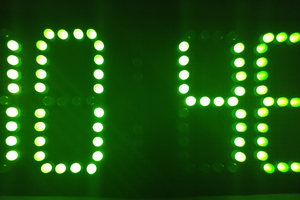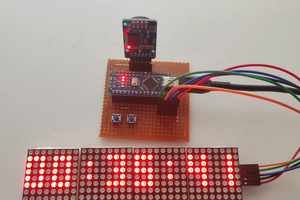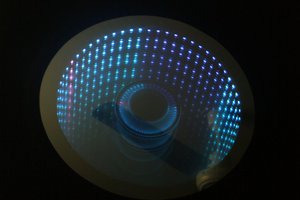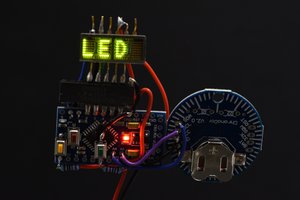Basic architecture
The clock is controlled by an Arduino Uno clone, with timekeeping on a DS-3231 RTC module. The 4 vintage 5082-7300 displays are housed sockets on a Mega PCB. The 4 display BCD inputs are connected in parallel and individually controlled by means of their latch pins. 2 momentary push buttons (salvaged from another control panel) are connected to digital inputs via 10k pullup resistors.
Converting 28V tungsten lamps to LEDs
I converted some tungsten indicator lamps into LED lamps by breaking the glass bulbs and soldering in diffused white LEDs with a bit of epoxy to strengthen them. Note, the metal filament holder wire was hard to solder to! This enabled the lamps to be directly driven (using resistors) by the Arduino.
Setting the time
To enable time setting mode the switch is toggled and accompanied by a beeping alarm, and flashing light. Time is set using two push buttons mounted on the top. The tone and flash was powered by a separate $3 Arduino as I wanted a quick and simple way of adding an alarm without having to edit the code!
I have also built 6-digit versions of the clock in a variety of flavours... more info to be added soon...
 Patrick Hickey
Patrick Hickey



 Dushyant Ahuja
Dushyant Ahuja
yes, I'll post it up in a day or two, many updates to add to my projects!